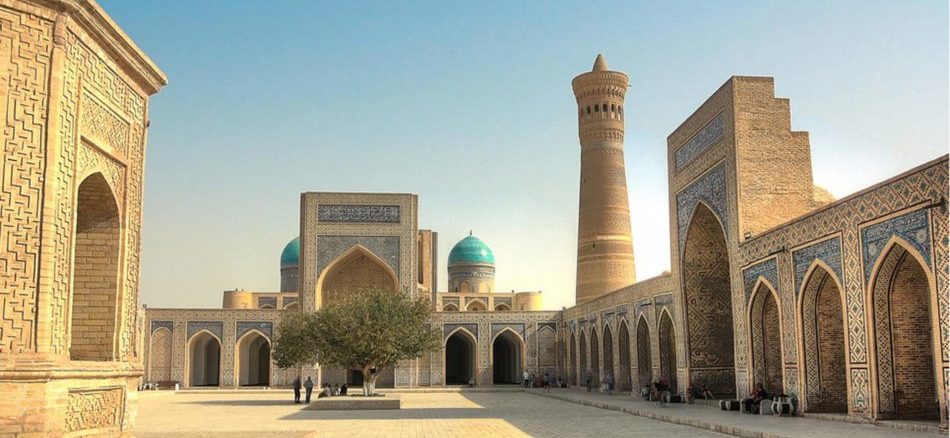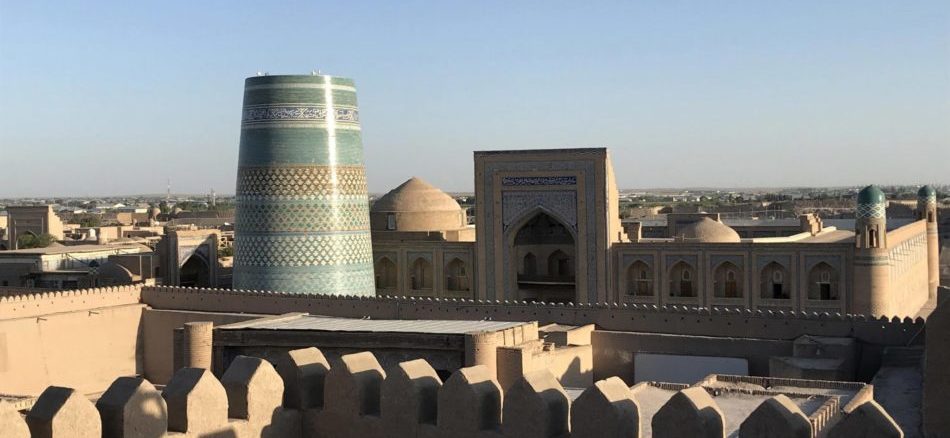Traditional and modern clothing in Uzbekistan. What do they dress in Uzbekistan?
Uzbek clothing Uzbekistan
The Uzbek national costume – clothing in Uzbekistan – created in ancient times and used to this day, reflects the national specificities of the Uzbek people, is closely linked to its culture and history. It has particularities and characteristics for each region.
Uzbekistan men’s clothing
Men’s clothing consisted of a dressing gown, shirts of various styles, a jacket (tunic), a belt, leather boots, trousers and a mandatory headdress: a turban or a duppi.
Men’s everyday clothing was a traditional shirt, which initially had a length below the knees, and was later shortened at the center of the hips.

Outer garment
Chopon is a men’s dressing gown, it has the same cut for all ages, which indicates its archaic character. The dresses, depending on the season, were sewn without lining, with thin lining padded with cotton. They made vertical cuts below on both sides to facilitate the step. The nobility and the most important men wore gold-embroidered chopons.
Headwear
Turban – generally perceived as an attribute of Muslim culture, of various size, color, style of dressing. A large white turban was worn by religious, craftsmen – a small turban of gray or bluish colors, peasants – a bandage of colored scarves. The turban was the main headdress of the Uzbeks. The Khorezmians preferred sheepskin hats of different colors as headgear.
Papakha is the headdress of the Uzbeks of Khorezm. Khorezmians prefer hats: sheepskin hats of different colors as headdress.
Duppi is a traditional Uzbek headdress. The different regions have many variations. The Uzbek name for these hats is “duppi” or “kalpok”. Especially in the nineteenth century, duppi as headdresses were very widespread and a variety of their shapes was determined: pointed, cone-shaped, hemispherical and tetrahedral, round and dome-shaped, in a word, of any type suggested by custom local. The most common male duppi of the Ferghana valley has a rigorous, modest yet very decorative appearance. It features white thread embroidery of an ornament in the shape of “calampir” chili pods on a black background and sixteen patterned arches that sit along the edge in a row. Quite often, black satin or velvet was chosen for men’s duppi. In total, there are, including the Fergana Chust duppi, six historically formed regional hat groups: Tashkent, Samarkand, Bukhara, Kashkadarya, Surkhandarya and Khorezm. Each area has its own style, handed down from generation to generation.
Uzbekistan women’s clothing
Women’s dressing gown – the collar of a women’s dressing gown is quite open and wide, its sides almost do not converge. The sleeves are shorter, but wider than men’s suits. Among the women of the oases of Bukhara and Samarkand, long and light rumcha robes, slightly adjacent at the waist, were common. The Mursak bathrobe is a jumpsuit in the shape of a tunic without a collar, sewn in such a way that the back overlaps while wearing. Mursaks were made long, on the floor, on a lining and most often quilted on cotton. The collar, hem and bottom of the sleeves were lined with braided braid.
Kamzol tank top – in the second half of the 19th century, tank top or kamzol appeared among the outerwear. It is a slightly fitted robe at the waist with short and narrow sleeves, with cut-out armholes and a turn-down collar. At the same time, short sleeveless jackets began to appear as nimcha vests.
Harem pants were an integral part of a woman’s clothes that she wore from childhood until her death. Pants, wide at the top, with narrow knees so that it was possible to pass the leg. In the past, trousers were sewn for a long time. The bottom of the legs was finished with jiyak braid, which ended with tassels.
Uzbek women covered their heads with a scarf. Often the headdress consisted of two scarves, one of which was thrown over the head and the second, folded diagonally, was worn in the form of a headband. When leaving the house, an Uzbek woman always wore a Mursak dressing gown or men’s dressing gown on her head. Since the mid-19th century, the paranji (burqa) has become traditional women’s clothing. This is a loose, modified dressing gown, which a woman threw over her head to hide her figure from prying eyes. With this use, the sleeves turned out to be useless and initially they were simply thrown behind the back, and then they also began to sew together, so that they became fake.












